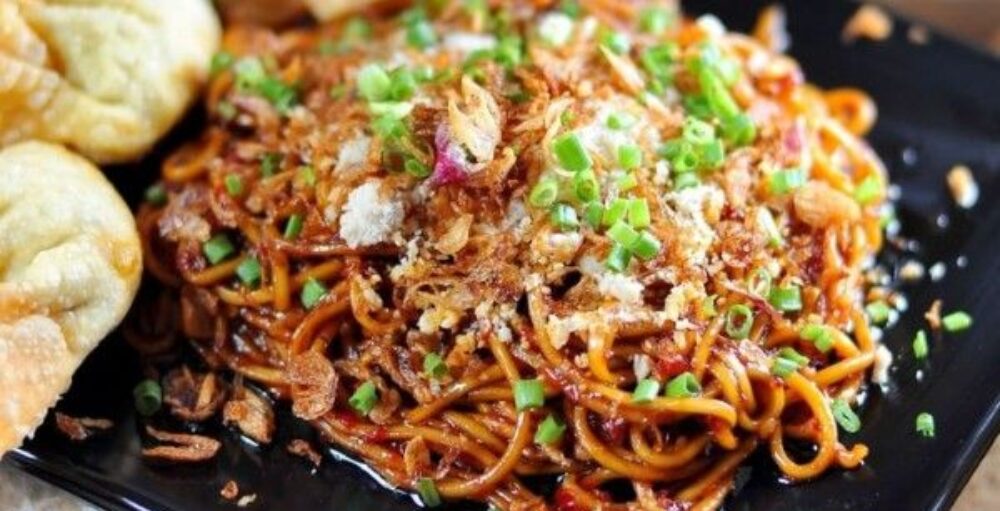Mie Gacoan Pontianak: A Culinary Journey
The Origins of Mie Gacoan
Mie Gacoan, a beloved noodle dish, originates from Indonesia, where it has secured a special place in the hearts of food lovers. While the dish varies from region to region, Mie Gacoan in Pontianak showcases a unique blend of local flavors and traditional recipes. The phrase “gacoan” refers to a playful style of enjoying meals that encourage sharing and savoring food with friends and family. Mie Gacoan is perfectly representative of this communal spirit.
The dish prominently features wheat noodles, distinguished by their chewy texture and versatility in accommodating different toppings and flavors. In Pontianak, the preparation of Mie Gacoan reflects the cultural confluence of Dayak, Malay, Chinese, and other culinary influences present in the region.
Distinctive Ingredients
The key to any exceptional Mie Gacoan lies in its ingredients. The foundation is high-quality wheat noodles, typically boiled to achieve the ideal texture. In Pontianak, these noodles are often paired with a vibrant mix of local vegetables, proteins, and rich sauces. Common ingredients include:
-
Meat Options: Mie Gacoan often features chicken, beef, or seafood. These proteins are marinated in a blend of spices, enhancing their flavor and tenderness.
-
Vegetables: Fresh ingredients play a crucial role in flavor and nutrition. Common additions include bok choy, bean sprouts, and mushrooms, providing a delightful crunch and color.
-
Signature Sauces: A house-made sauce usually accompanies Mie Gacoan. It consists of a savory mix of soy sauce, garlic, and chili, delivering a balanced explosion of umami that elevates the dish.
-
Condiments: Toppings such as fried shallots, scallions, and sesame seeds add layers of flavor and texture, making each spoonful an unforgettable experience.
Unique Preparation Method
The preparation method of Mie Gacoan in Pontianak distinguishes it from other Indonesian noodle dishes. The noodles are meticulously crafted, often by hand, ensuring the perfect chewy bite. The cooking process typically involves blanching the noodles until they achieve the desired tenderness, followed by a quick stir-frying with the chosen proteins and vegetables.
The secret lies in the stir-frying technique; the chefs skillfully toss the ingredients over high heat, allowing the flavors to meld beautifully. This method also helps the noodles absorb the rich sauce, ensuring each strand is flavorful.
Dining Experience at Mie Gacoan Pontianak
When visiting Mie Gacoan in Pontianak, diners are welcomed into a casual yet vibrant atmosphere. The restaurant design often features communal tables, encouraging the communal dining experience synonymous with Mie Gacoan culture. Decorated with colorful murals depicting local scenes, the ambiance is casual and inviting, perfect for family gatherings or friendly encounters.
Ordering at Mie Gacoan is an adventure in itself. Guests can select from various noodle options, proteins, and spice levels, tailoring the dish to their preferences. It’s common for diners to sample different dishes and share amongst one another, embodying the spirit of togetherness that Mie Gacoan represents.
The Cultural Significance of Mie Gacoan
In Pontianak, Mie Gacoan transcends mere sustenance; it is a symbol of community and tradition. Food is often at the center of social gatherings, showcasing the local culture’s warmth and hospitality. The shared experience of enjoying a bowl of Mie Gacoan fosters connections among friends and families, making it a staple for celebrations and casual get-togethers alike.
The dish serves as a cultural bridge, merging various culinary traditions and showcasing the diversity of flavors present in Indonesian cuisine. Each bowl tells a story of heritage, showcasing the rich tapestry of influences that contribute to Pontianak’s vibrant food scene.
Health Aspects
Beyond its rich flavor, Mie Gacoan can be a healthy dining option if prepared with fresh ingredients. The combination of vegetables and protein not only adds nutritional value but also contributes to a balanced meal. The use of fresh, local produce ensures that diners enjoy a nutrient-rich experience, while the variety of toppings allows for personalization based on dietary preferences.
For health-conscious diners, opting for less oily sauces or additional vegetables can enhance the meal’s health quotient. Furthermore, the availability of whole wheat noodles is becoming increasingly popular, catering to those seeking healthier carbohydrate options.
Popular Variations
While the classic Mie Gacoan is always a hit, many variations have emerged, each reflecting the local chefs’ creativity. Some popular modifications found in Pontianak include:
-
Seafood Mie Gacoan: Incorporating shrimp, squid, and fish to create a maritime twist, enhancing the dish’s depth of flavor and showcasing Pontianak’s coastal abundance.
-
Spicy Mie Gacoan: For those with a penchant for heat, this variation elevates the spice levels, combining fresh chilies with the signature sauce for an exhilarating kick.
-
Vegetarian Mie Gacoan: With the growing trend toward plant-based eating, many restaurants now offer a vegetarian version, substituting meat with tofu or tempeh and adding a diverse array of vegetables.
-
Crispy Mie Gacoan: Adapting the traditional recipe, this version involves deep-frying the noodles to create a crunchy texture, which contrasts beautifully with the tender stir-fried toppings.
Pairing and Accompaniments
To enhance the Mie Gacoan experience, a variety of beverages and side dishes can be paired. Traditional Indonesian drinks such as Teh Tarik, a frothy tea, or Es Kelapa Muda, a refreshing coconut drink, provide excellent complements to the bold flavors of the noodles.
For sides, exploring local snacks like Kue Cubir or Tahu Tempe can add complementary tastes, giving diners a well-rounded culinary experience in one sitting.
Through its rich flavors, cultural significance, and communal essence, Mie Gacoan Pontianak serves as a delightful culinary journey that transports diners into the vibrant heart of Indonesia, inviting them to relish every moment in true communal spirit.
